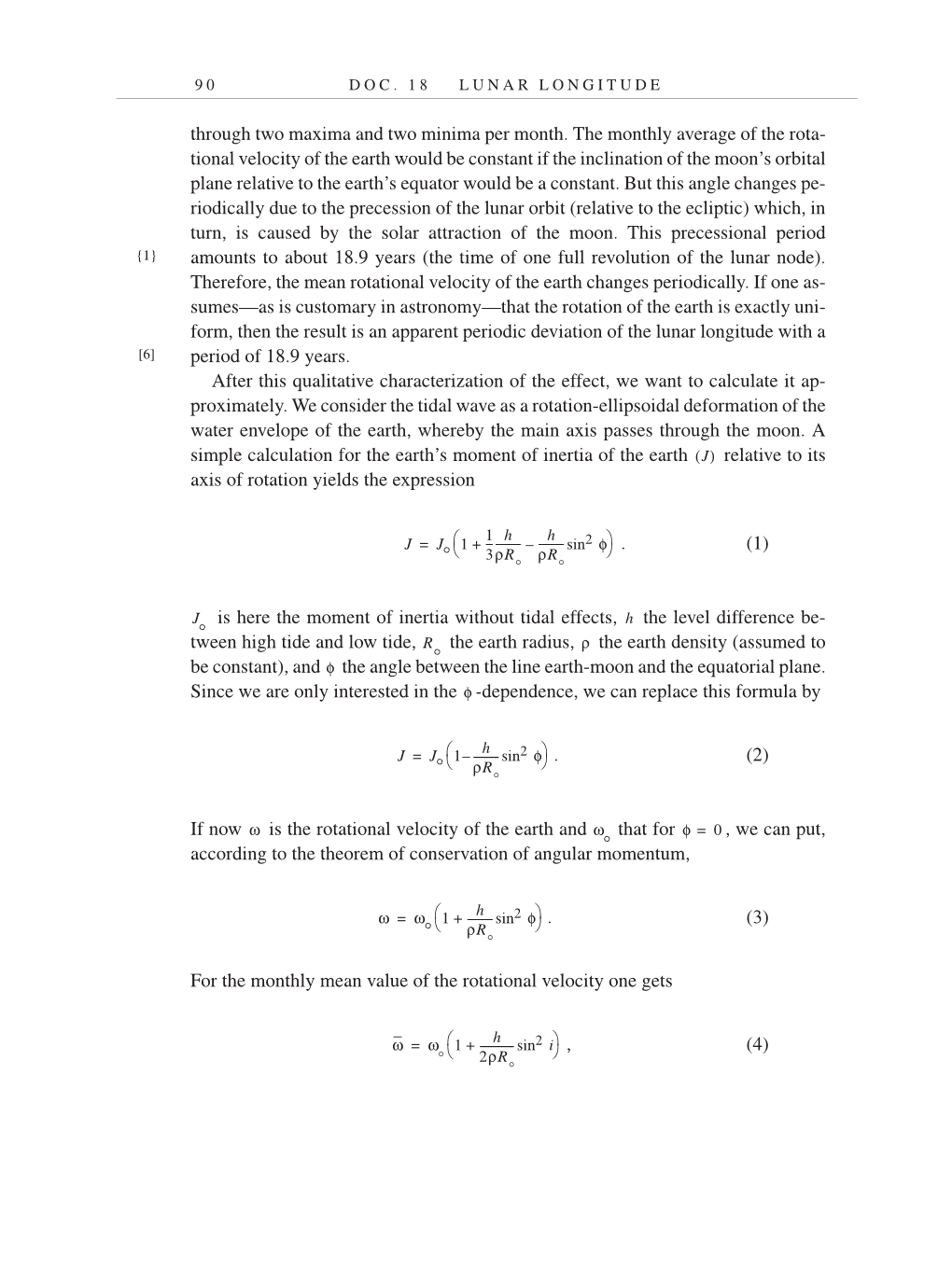9 0 D O C . 1 8 L U N A R L O N G I T U D E
through two maxima and two minima per month. The monthly average of the rota-
tional velocity of the earth would be constant if the inclination of the moon’s orbital
plane relative to the earth’s equator would be a constant. But this angle changes pe-
riodically due to the precession of the lunar orbit (relative to the ecliptic) which, in
turn, is caused by the solar attraction of the moon. This precessional period
amounts to about 18.9 years (the time of one full revolution of the lunar node).
Therefore, the mean rotational velocity of the earth changes periodically. If one as-
sumes—as is customary in astronomy—that the rotation of the earth is exactly uni-
form, then the result is an apparent periodic deviation of the lunar longitude with a
period of 18.9 years.
After this qualitative characterization of the effect, we want to calculate it ap-
proximately. We consider the tidal wave as a rotation-ellipsoidal deformation of the
water envelope of the earth, whereby the main axis passes through the moon. A
simple calculation for the earth’s moment of inertia of the earth relative to its
axis of rotation yields the expression
. (1)
is here the moment of inertia without tidal effects, the level difference be-
tween high tide and low tide, the earth radius, the earth density (assumed to
be constant), and the angle between the line earth-moon and the equatorial plane.
Since we are only interested in the -dependence, we can replace this formula by
. (2)
If now is the rotational velocity of the earth and that for , we can put,
according to the theorem of conservation of angular momentum,
. (3)
For the monthly mean value of the rotational velocity one gets
, (4)
{1}
[6]
J) (
J J
°
1
1---------
3ρR
-- -
h
°
-
h
ρR
°
--------- -
φ⎠
sin2
– +
⎝
⎛ ⎞
=
J
°
h
R
°
ρ
φ
φ
J J
°
1–
h
ρR
°
--------- - φ⎠
sin2
⎝
⎛ ⎞
=
ω ω
°
φ 0 =
ω ω
°
1
h
ρR
°
--------- - + φ⎠
sin2
⎝
⎛ ⎞
=
ω ω
°
1
h
2ρR
°
------------ - + i⎠
sin2
⎝
⎛ ⎞
=
